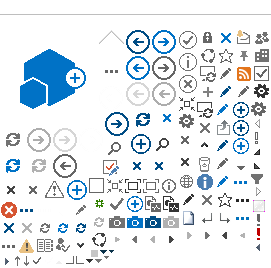As wildfires, tornadoes and floods continue to disrupt the lives of millions across the U.S., our industry must face a hard truth: The current insurance purchasing journey often fails both consumers and the agents trying to serve them.
As wildfires, tornadoes and floods continue to disrupt the lives of millions across the U.S., our industry must face a hard truth: The current insurance purchasing journey often fails both consumers and the agents trying to serve them.
In disaster-prone areas, property owners are watching their premiums climb—even when they've never filed a claim. Frustration mounts as insurers exit markets, leaving homeowners with fewer and often inferior options. On the independent insurance agency side, as carriers grow more risk-averse, agents struggle to place quality business, putting their relationships and reputations on the line.
One way out of this Catch-22 is to take a hard look at the purchasing journey and implement changes—and independent agents are in the driver's seat to make that happen.
Texas is a case study in how fragmented and confusing the insurance landscape has become. Houston faces hurricane and flood risk, Central Texas is wildfire-prone—with more than 11,000 acres burned in wildfires in 2025, according to the Texas A&M Forest Service—and Dallas sees frequent hailstorms.
The influx of nearly 2 million new residents since 2020, according to the Austin Business Journal, has brought an awareness gap, as many are unfamiliar with local weather hazards and the impact on their insurance.
In contrast, San Antonio and the surrounding Hill Country offer a bit of a safe haven with fewer weather-related risks. Carriers have recently become more eager to write policies there. However, they aren't as bullish about covering risks in other parts of the state.
For independent agents, this patchwork of risk creates friction with their potential clients. Consider a Houston resident shopping for a homeowners policy. The agent wants to match them with the best carrier at an affordable price. But if the agent's carrier of choice won't write the risk—or if they price it out of their customer's reach—the agent's only option is to find subpar coverage with a lesser carrier at the same high cost, simply because they're one of the few willing to take on the risk. The agent is not happy. The customer is angry. Nobody wins.
Redefining the Purchasing Experience
Over the past two decades, major carriers have trained consumers to shop for insurance the same way they shop for cell phone plans: based solely on price. Catchy commercials and mascot-driven branding turned coverage into a commodity.
The result? Many consumers now treat insurance as interchangeable and prioritize convenience and price over consultation and service. They buy directly from carriers, often without understanding what they're actually covered for. They believe that their coverage is the same, no matter who provides it.
But the initial satisfaction of low premiums has given way to hard lessons in underinsurance—sometimes painfully so, as seen during the Los Angeles wildfires in January, where many homeowners discovered their policies fell far short when they needed them most.
As climate risks evolve and insurer appetites continually change, consumers need a trusted advisor to help them strike the right balance between coverage and affordability. That's where independent agents will play an indispensable role. By forging a deep relationship with consumers, agents can understand each customer's risk appetite and match them with the most appropriate and cost-effective products.
To start reshaping the consumer buying journey in disaster-prone areas, agents and brokers should look beyond the transaction and focus on delivering continuous, high-touch service. Here are six best practices for agencies to redefine the insurance purchasing process:
1) Engage customers proactively. Consistent engagement builds trust but in personal lines, it's tough. Lean on cost-effective channels like email newsletters, local content and post-storm check-ins. A quick “thinking of you" after a nearby storm can go a long way in asking if they want to talk about their exposure or adjust their policies.
2) Educate on the why. Help consumers understand why premiums rise even without a direct loss. Explain how regional trends, urban development and vegetation patterns drive wildfire exposure. Alert new movers to region-specific threats they may not have faced before, such as hail in Dallas or floods in Houston, so they can better prepare and protect themselves
3) Simplify the complex. Consumers crave simplicity. Meet their needs by providing educational content on your website and social platforms to demystify concepts like umbrella coverage or replacement cost. Position your agency as a local expert by contributing to community publications and speaking with media.
4) Train for transparency. Rising premiums aren't easy to talk about. Train your agents to explain risk shifts honestly and empathetically. Then, help your customers maneuver through their buying journey. If they're concerned about cost, help them find money-saving opportunities, such as adding an alarm system to their property or using a telematics device in their vehicles.
5) Streamline with tech. Find InsurTech solutions that can ease the information-gathering process, relieving the burden on consumers and allowing your agents to identify unprotected risks faster. Implement or expand your use of customer-facing portals with self-service options so customers can complete simple tasks without contacting their agents.
6) Strengthen carrier ties. Open regular lines of communication with underwriters about evolving climate risks and pass that information on to your consumers. Seek to understand each carrier's risk appetite to connect your customers with the right products at the right time.
The complexity of insurance, particularly in disaster-related areas, requires an expert advisor who can walk consumers through every step of the process. The future belongs to agents who blend cutting-edge tech with a personal touch, streamlining the journey without sacrificing trust.
Colleen O'Hara is a senior executive with Freshquote, a startup that connects customers with local independent agents and brokers who serve as trusted advisors on the insurance buying journey.
